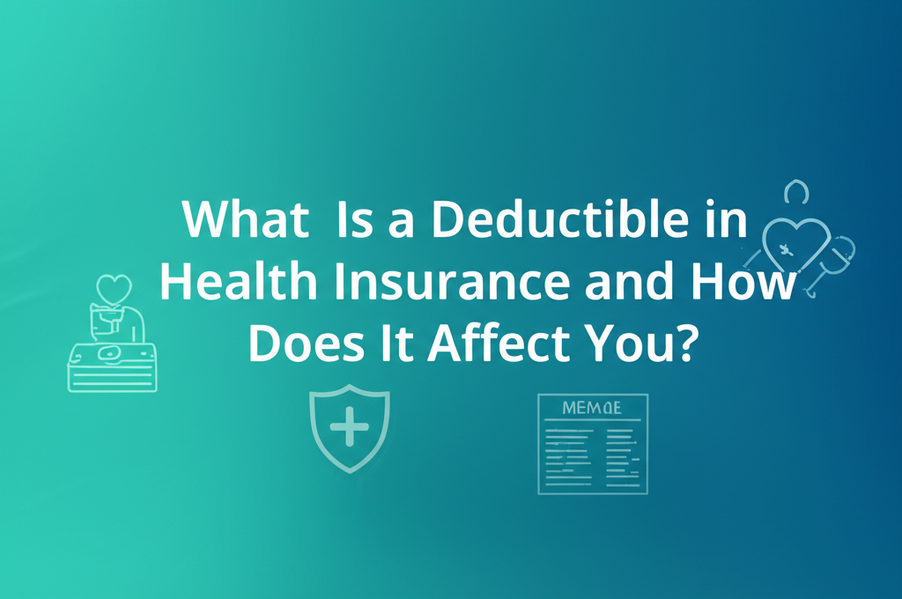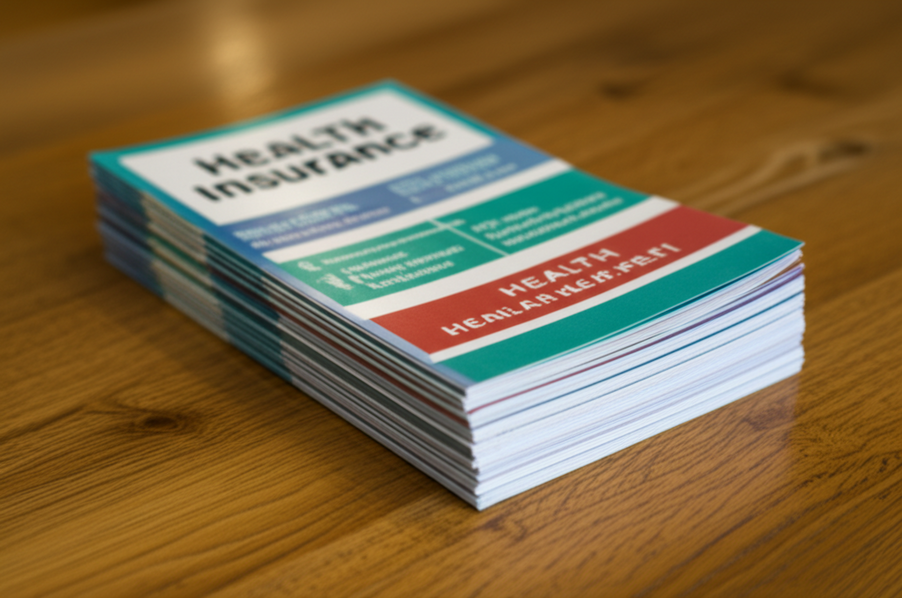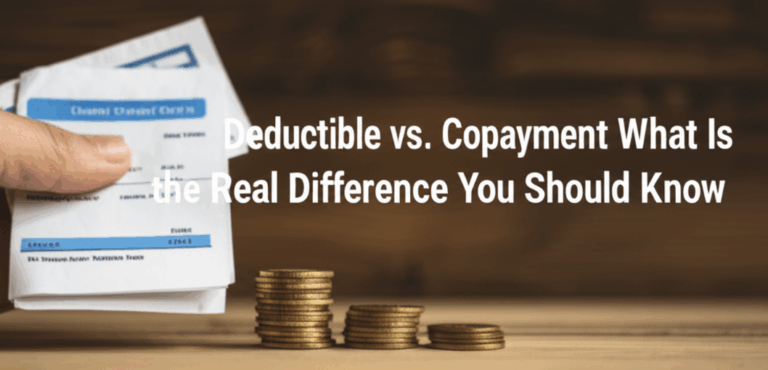What Is a Deductible in Health Insurance and How Does It Affect You?

Understanding what is a deductible in health insurance matters for both new and experienced policyholders. Health insurance protects us from big bills, but deductibles play a central role in what we pay. If you want to avoid costly surprises, learning about health insurance deductibles can help you. We will explain how a deductible works, why it affects your yearly expenses, and how you can make smart choices.
What does a deductible mean for your health insurance costs
Your deductible sets your first line of expenses. Your health insurance deductible is the amount you must pay out of your own pocket before your insurance plan starts covering costs. At the start of each year, your deductible resets. For example, if your deductible is $1,000, you pay that amount first, then your insurer begins sharing costs. This structure causes your deductible to act as the first shield before your other plan benefits kick in. For families, a family deductible can create a bigger initial cost barrier, but it spreads the total among all members.
Lower deductibles usually mean higher monthly payments. Many people ask, Should I pick a high or low deductible? When you choose a lower deductible, your plan costs more each month. Insurers often reward those who take on greater out-of-pocket risk with a lower monthly premium. Comparing your expected medical bills each year will help you plan ahead. If you visit doctors often, or you have chronic health issues, a low deductible may offer peace of mind.
Unexpected medical bills can be easier to manage with the right deductible Medical emergencies or surgeries are always expensive. You do not want to face large bills when you are not prepared. By selecting the right deductible, you can cushion the impact of sudden costs. Think about your savings, your health needs, and your family’s medical history.

What happens when you reach your deductible
Your plan starts paying more once you hit your deductible The moment you pay enough qualified expenses to reach your deductible, your insurer begins to pay its share. Health insurance basics say you still owe copays and coinsurance. Your plan pays a higher portion of your bills, which leaves you responsible for smaller amounts, such as a visit copay. This stage can help you save money if you have ongoing treatment.
You may still have copays and coinsurance after meeting your deductible. Paying your deductible does not mean all medical costs vanish. Copays are fixed fees for each visit or prescription, while coinsurance means you pay a small percentage of the bill. Even after reaching your deductible, you must keep paying these amounts until you hit your out-of-pocket maximum.

What types of health insurance deductibles are there
Individual and family deductible types work differently. Plans sometimes offer individual and family deductibles. With individual deductibles, each person must reach their own limit before insurance pays. Family deductible health insurance combines everyone’s expenses, so the whole family works toward a total. Knowing which one applies to you lets you plan for the year’s expected costs.
High and low deductible plans offer different benefits and risks. A high deductible health plan trades low monthly premiums for higher upfront costs when care is needed. These plans often pair well with health savings accounts (HSAs). In my experience, healthy people or those who rarely visit a doctor may benefit. However, those with regular medical needs usually save more with lower deductible plans. Reviewing your medical usage patterns can show you which option works best for your own situation.

What steps can you take to choose the right deductible for you
Consider your typical yearly health care use before choosing. Looking at your health care habits is smart. If you go to the doctor a lot, a low deductible can help with costs. If you hardly see a physician, choosing a higher deductible may keep your monthly premiums in check. Evaluate what services you use and how often you or your family visit clinics, since these numbers can guide your decision.
Compare monthly costs and out-of-pocket limits for each plan. You want to check not just deductibles, but also monthly payments. Out-of-pocket maximums cap your yearly expenses. A plan with a high deductible but lower total max cost might suit your budget better. Use a table to compare:
| Plan | Deductible | Monthly Premium | Out-of-Pocket Max |
|---|---|---|---|
| Plan A | $500 | $400 | $4,000 |
| Plan B | $2,500 | $120 | $8,000 |
Seeking help from a trusted insurance advisor adds expertise. You can find more information about plan options and clarify how deductibles work. Internal resources like “Understanding insurance copays and coinsurance” give more details (insurance copays and coinsurance).

What are common misunderstandings about deductibles in health insurance
Not every health cost applies to your deductible. Some people think every dollar they spend on care counts toward their deductible. That is not true. Some costs, like copays for certain drugs or visits, might not apply. Reading your explanation of benefits each month will clarify what claims go to your deductible total.
Preventive care is often covered regardless of your deductible. Routine check-ups and screenings are often covered without needing to pay out-of-pocket first. Government rules, like the Affordable Care Act, require plans to pay for important preventive care. This benefit protects your health and your finances.
It helps to use credible sources, like the Kaiser Family Foundation, for more information on current deductible rules.
Related:
What frequently asked questions do people have about health insurance deductibles
What is a deductible in health insurance? A deductible is the amount you pay out-of-pocket for health care before your insurance plan helps pay costs.
How does a deductible work with copays and coinsurance? You pay out-of-pocket until you meet your deductible. Then, you split costs with your insurer using copays and coinsurance.
Do all insurance plans have deductibles? (Yes or No) Most plans do, but not every policy includes a deductible. Some plans skip them for certain services.
When do I pay my deductible? You pay your deductible whenever you have a qualified medical expense until you reach your yearly limit.
Does my deductible reset every year? (Yes or No) Yes, deductibles reset every policy year.
Does preventive care count toward my deductible? (Yes or No) No, preventive services are often covered regardless and do not count toward your deductible.
How can I afford a high deductible if I get sick? Building a savings cushion with a health savings account can help. Talk to financial planners if you worry about costs.
What are the main takeaways about health insurance deductibles
Understanding your deductible puts you in control of your health costs. When you learn how your plan’s deductible works, you can avoid confusion at bill time. That lowers stress during medical emergencies. Deductibles differ between health plans. You want to check your plan rules every renewal.
Choosing the right deductible helps balance monthly bills with potential medical needs. The right deductible saves you money if you use your plan often. We suggest checking your expected care use, plan limits, and all related costs.
You can use educational resources like our “Health insurance basics” guide to get even more help. Real families tell us that tracking expenses helps avoid surprise bills. Learning what is deductible in health insurance can lead to better decisions and peace of mind.






